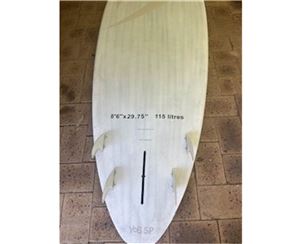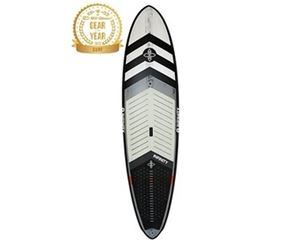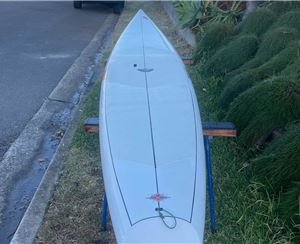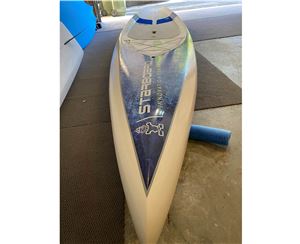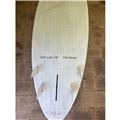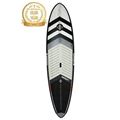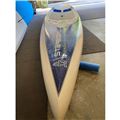Catching Your First Wave
 You may have started Stand Up Paddle Boarding for a range of reasons. Maybe you were sick of small surf days, you fancied a new way of keeping fit, or you thought it would be a great way to explore flat water spots. Regardless of why you started, once you've mastered the basics (and stumbled across some of the great surfing SUP footage on the internet!) you're bound to want to have a go in the surf.
You may have started Stand Up Paddle Boarding for a range of reasons. Maybe you were sick of small surf days, you fancied a new way of keeping fit, or you thought it would be a great way to explore flat water spots. Regardless of why you started, once you've mastered the basics (and stumbled across some of the great surfing SUP footage on the internet!) you're bound to want to have a go in the surf.
Although the triple-overhead sessions enjoyed by the Hawaiian watermen may be a bit out of your comfort zone for now, SUPing is one of the easiest ways to enjoy surfing and - providing you're up and paddling competently - you can give surfing a go pretty early on in your SUPing career.
We've broken down the basics into a few key points to help you get started.
1. Choose your day. SUPing is best suited to slower moving waves. If a wave is barrelling or breaking quickly in shallow water then it is best left to surfers on smaller boards. You ideally want knee to shoulder high waves that are breaking slowly for your first few sessions. If it is too windy (especially if the wind is blowing onshore) then this will also decrease wave quality and make it harder for you to spot waves.
2. Choose your spot. On smaller days it is relatively easy to paddle 'out back' (where the unbroken waves are) on your SUP and to get yourself into a position where waves are breaking. Do make sure that you stay away from groups of surfers who are sat on a clear 'peak' when you are starting out. There is a strict code of conduct amongst anyone catching waves and - until you're confidently riding waves - you should stay clear of other surfers.
3. Paddling out. Before you begin surfing, you need to get out back. Getting out through broken waves can be quite challenging (especially if you are used to flat water). If there are several rows of broken waves to get through before you're out back, then your best technique is to wade out until you're in chest deep water, and then lie on your board and paddle with your arms. You can rest your paddle on your board and hold it under your chest as you paddle.
As you approach a broken wave lift your body up on your arms (pinning the paddle down with one arm). Let the board go over the top of the wave, and some of the wave pass between you and your board.
4. Where is out back?! This is one of those things that you will get more of a feel for as you spend more time in the surf. You need to be beyond where most of the waves are breaking, and just outside where the 'set waves' (the larger group of waves that come in every few minutes) are breaking. When you first get out back, you're best off being too far out and then working your way in once you've got a feel for where the sets are breaking. Then wait with your board facing the shore and keep your eyes on the horizon, looking out for waves!

5. Choosing your wave. When you see a set approaching you need to choose which wave to catch. Sets can have upwards of 3 waves, so there's no need to go for the first one... You need to aim to catch the wave before it breaks, but not too early as it won't pick you up. So, choose your wave and then paddle towards or away from the 'peak' (where the wave starts breaking) to get in the right position.
6. Catching the wave. Paddle in the neutral position initially - with your feet both facing forward. Paddle firmly (either alternate sides or just one side - whatever normally works best for you) towards the beach. You need to quickly generate speed so that you are travelling at a similar speed to the wave when it gets to you.
7. I've got it! When you've caught the wave you will know. If you're used to the sensation of your paddle propelling your board then this may feel quite strange. There is a clear moment when the wave begins powering your board and, with experience, you'll learn to understand and anticipate this. The most important thing to do when you feel the wave take you, is to change your stance: you can't surf a wave facing forward, so you need to change to a sideways surfing stance (either 'regular' - left foot forward, or 'goofy' - right foot forward). If you aren't sure which way you surf then try not to think about it and one way should feel more natural: go with that!
And you're surfing!
Troubleshooting:
? I can't get out-back! This could be for a number of reasons - if the surf is 'sety', then wait for a gap between sets and then really go for it. Take a look from the beach before you get in the water too, you may spot flatter sections between peaks that it's easier to get out through. Or the surf may simply be too big, in which case leave it for a smaller day.
? I can't get on the wave! This could be due to one of 2 things: positioning or speed. You need to be paddling hard before the wave reaches you, and you need to be going for waves that are beginning to break. If the waves keep going under your board then you are either too far out, or are too far away from the peak.
? The waves keep throwing me off my board! You are probably going for waves too late. Unlike surfers who can catch waves late on their short boards, you need to catch the wave before it breaks. If you leave it too late then the wave will catch your board and throw you off.
Catching waves on a SUP will take a few sessions to get the hang of, and a lifetime to truly master, but wave-riding is one of the best experiences you can have on your SUP, so get out there, take a few wipeouts and get wave-riding!
RELATED ARTICLES:
How To Ride Waves On A SUP (video)
Getting out through the surf on A SUP (video)
Kook or Kool - Surfing/SUP Etiquette

SUP Australia releases its State and National Titles dates
SUP Australia Tour dates are confirmed for the 2012/2013 season!


